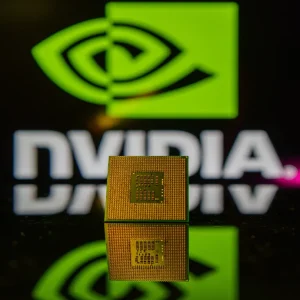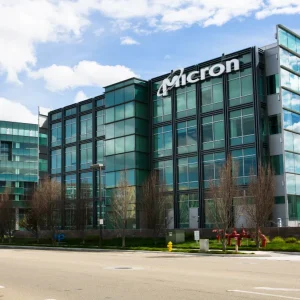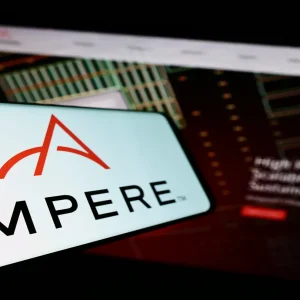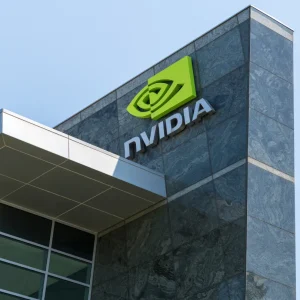Network Equipment Technologies Inc, headquartered in Redwood, California, was set up six years ago to take advantage of both the advent of high-speed T1 digital lines and the deregulation of the Bell system. The significance of T1 lines for Network Equipment is that following deregulation customers have been able to lease these lines which are designed to carry voice and data traffic via a high-speed 1.544Mbps digital signal. This means that customers can combine many application-specific networks into one backbone network, which can serve as a utility to provide bandwidth for all specific applications thereby enabling them to build and manage private wide area networks.
T3 lines
Consequently, Network Equipment seized the opportunity to introduce its flagship product, the Integrated Digital Network Exchange, into the market in 1984. The Network is part of a genre of communications products known as Transmission Resource Managers, which are used by large corporates to increase the availability of high priority applications, to manage the private network and its bandwidth, and to accommodate data processing and transmission services offered by large carriers. Network Equipment’s original products were developed for high-end networking capabilities and include the IDNX/70 for high capacity implementation in headquarters sites or large data processing centres, the IDNX/40 for lower volume locations such as regional centres, and the IDNX/20 for smaller sites. In April this range was expanded as the IDNX/90 was added to the top, serving as a platform for non-subrated T3 services (these lines carry digital voice and data signals at the speed of 44.7Mbps), while the IDNX/10 was added to the bottom of the range to provide cost-effective connectivity to backbone networks for low traffic volume sites. Along with these products the company offers software to manage networks such as the Series 5000 Network Management System and the Model 3040/3050 Enhanced Operator Console. Network Equipment has also been busy adding products to suit the mid-range and low-end segments of the data communications market. To this end it acquired ComDesign in 1986: the company manufactures products that operate at sub-T1 speeds of 64Kbps and below. Now called the Access Products Division, this subsidiary integrates data applications into IDNX networks, so that Network Equipment’s private networks extend down to the desktop through products such as the SPX Network Processor and the PacketPlus/50 X25 switch. Not all of the company’s acquisitive intentions have proved so successful: its bid for Excelan Inc in the spring of 1988, for example, was called off after Network Equipment claimed that Excelan was in breach of the merger agreement (CI No 930).
By Katy Ring
A subsequent deal with Cisco Systems this February has enabled Network Equipment to license software to sell to customers as an integrated bridge and router to attach local area networks to wide area networks. (This merging of local and wide area networks was something the Excelan acquisition was meant to provide). Network Equipment claims to have the largest market share of the US T1 multiplexing business and is targeting the 1,000 largest users of communications equipment, of which it now serves 200. Its annual figures to March 31 revealed that Network Equipment had made a net profit of $16m on turnover that was just under $137m. In fact 25% of the company’s turnover comes from IBM following a distribution and product development agreement made in June 1987 (CI No 701). Under this agreement IBM sells Network Equipment products on a non-exclusive basis world-wide to large mainframe customers and has licensed Network Equipment’s protocols so that it can emulate them (CI No 854). In return Network Equipment receives research and development funding from IBM and has the right to take IBM technology and incorporate it into devices. Aside from counting companies such as IBM, DEC, Unisys, and Texas Instruments among its customers, major banks, large retailers, firms in the securities industry an
d government agencies all use Network Equipment products. Having established a high profile in the US, Network Equipment set up a European base, Network Equipment Technology Ltd, 18 months ago in Crawley, Sussex. It now feels that with about 35 staff it has built this European operation up to a size which warrants bringing in a strong vice president to give it that extra pzazz. The man in question is John Eddon, who used to be vice-president of worldwide marketing for the Unisys subsidiary, Timeplex Inc, and who has also been marketing manager, data processing, IBM Europe. The fact that Network Equipment has been so quiet in Europe so far was according to Charles Keating, the company’s international vice president, because it was making sure its systems are compliant with European standards before shouting about its products.
10% in Europe
At the moment 10% of the company’s revenue comes from Europe, but it wants that to rise to around 30%.It already has 35 networks operating in Europe, around half of which are extensions to US networks for companies such as American Express and DuPont. More encouraging, however, is the fact that the other half are completely new European contracts with organisations such as Credit Suisse. Ultimately Network Equipment wants to network companies operating in the US, Europe and the Far East. It has equipment installed and working in all major European countries and will open support centres in Oslo and Paris this year, with centres opening in Italy and Germany next year. The reason Europe is so attractive to companies like Network Equipment is because of the European-wide amalgamations of businesses, and the deregulation of the European telecommunication networks. If this follows the same pattern as in the US then transmission bandwidth will become inexpensive and a potentially enormous number of users will add applications such as videoconferencing onto their networks, all of which is good news for Network Equipment. Indeed, Keating believes that one market sector in particular that stands to expand when this happens is manufacturing and design. He sees this sector following the pattern of the financial services in the networking of information and points to the example of big multinationals such as IBM, Ford and Peugeot as companies that are already implementing 24-hour a day design programmes to shorten product lead times. All in all the future is looking rosy for Network Equipment which is now listed on the New York Stock Exchange (CI No 1,179) and expects $200m turnover for the year to March 31 1990.






